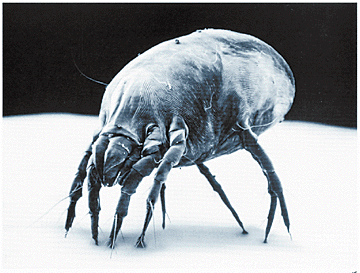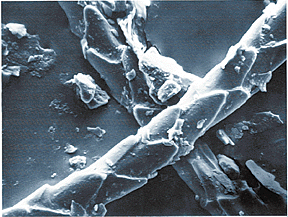


Vacuuming helps clear
the air of nasty allergansBy Tim Ryan
Suck 'em up!
HEPA's the buzzword
Star-BulletinIF you're an allergy sufferer, there's a good reason to vacuum often. Ordinary household dust harbors plant and animal proteins -- pollens from trees, grasses and weeds; molds; body parts and feces from cockroaches or dust mites; and animal dander, dried saliva and urine -- all of which can add up to sneezing, wheezing, runny noses and coughing fits.
The National Institute of Allergy and Infectious Diseases estimates 50 million Americans -- one in five -- has some form of regular allergy, an abnormal sensitivity to a substance (an allergen) that is eaten, inhaled or touched, that most other people can tolerate.
Allergans often find homes in household dust, which is very personal stuff. In fact, experts say, if you inspect dust you can tell whether a person has pets, lives in an urban or rural home, lives near a busy street, even what was eaten for dinner.
And much of household dust doesn't just come from Fluffy and Fido but from human hair, dandruff and skin particles.
All this shedding creates particles that float through the air, eventually, settling as dust. Then it morphs into something more disgusting. With the right humidity and temperature conditions, mold and bacteria grow and that little clump of dust creates its own dust cloud.
Dust mites are so small that between 100 and 500 individual mites live in a single gram of dust. But it's the mites' feces which cause the major problem.

Dust mites live in fabrics like bedding, upholstered furniture, stuffed animals, and carpeting that collect dust. They grow best where it's warm and humid.These tiny eight-legged creatures, are smaller than a speck of salt and love to dine on discarded skin. Each mite produces between 10 and 20 waste pellets each day. And each egg-laying female can increase the population by 25 to 30 mites every three weeks.
The best thing to prevent dust mite allergies is to remove their likely homes, like wall-to-wall carpeting and overstuffed upholstered furniture.
Dehumidifying your home can help. Air conditioning helps reduce humidity. Dust mites do best when the relative humidity is above 55 percent. Clean air conditioning filters every month.
Keeping your bedroom hospital-clean and making some minor adjustments to decor can send mites packing.
Wash all bedding (including mattress pads, comforters and blankets) in hot water every week to 10 days. Walls, ceilings, closets and the backs and bottoms of furniture should also be cleaned or dusted weekly.
Cover mattresses in a ready-made air-tight encasement, so the mites and their debris can't get out.
Keep a bedspread on your bed all day to collect dust, but carefully remove it from your bedroom before you go to sleep.
Avoid feather or down pillows; instead, use polyester fiber-fill such as Hollofil or Dacron. While dust mites like synthetic pillows as much as feathers or foam, the synthetic can be washed. No matter what you use, all pillows should be encased.
Don't think you can get away with a quick flurry of feather dusting. it is essential to damp-dust, otherwise you're just displacing the dust and it will settle somewhere else. Here are some more tips to control airborne contaminants:
Use special encasements for mattresses and pillows to control dust mites.
Vacuum frequently to get rid of dust mites and other dust-borne allergens.
HEPA’s the buzzword
By Tim Ryan
for vacuums
Star-BulletinTrue HEPA filtration is a method designed specifically to protect the human respiratory system.
HEPA stands for High Efficiency Particulate Arrestance.
For a filter to be called a "True" HEPA, it must retain and filter out all particles from the air that passes through it down to 0.3 microns in size, at an efficiency rate of 99.97 percent. A "HEPA-type" filter may look similar, but is not the same as a "True HEPA" filter.
Particles that are 0.3 micron in size are the most difficult particles to trap and contain within a filter. A 0.3 micron particle, when inhaled, passes easily into the body's respiratory system so the body's natural defense system is more vulnerable to these small particles.
Living organisms such as bacteria and viruses are not killed when captured by a True HEPA filter. Most viruses are smaller than 0.3 microns and they can pass through a HEPA filter. Some may get trapped by adhering to the HEPA media but can also break loose and return to the air.
And what is a micron? It's a measure of length: 1 micron equals 1 millionth of a meter; a particle that is 10 microns or less in size is not visible to the naked human eye. Here are some common air contaminants and their size in microns:
Human Hair: (70 to 100 microns)
Pet Dander: (0.5 to 100 microns)
Pollen: (5 to 100 microns)
Mold: (2 to 20 microns)
Dust Mite Debris: (0.5 to 50 microns)
Household Dust: (.05 to 100 microns)
Skin Flakes: (0.4 to 10 microns)
Click for online
calendars and events.